The dignified American Akita is a dog breed originally developed in Japan and later bred as a more heavy-boned variety in the US. There are many different American Akita dog colors.
Standard American Akita Coat Colors
Let’s have a closer look at the different American Akita colors and markings:
Sable American Akita
The majority of American Akitas have a sable pattern. Sable Akitas come in different shades of phaeomelanin. In this breed, the shades of tan are named brown, red, fawn or silver.
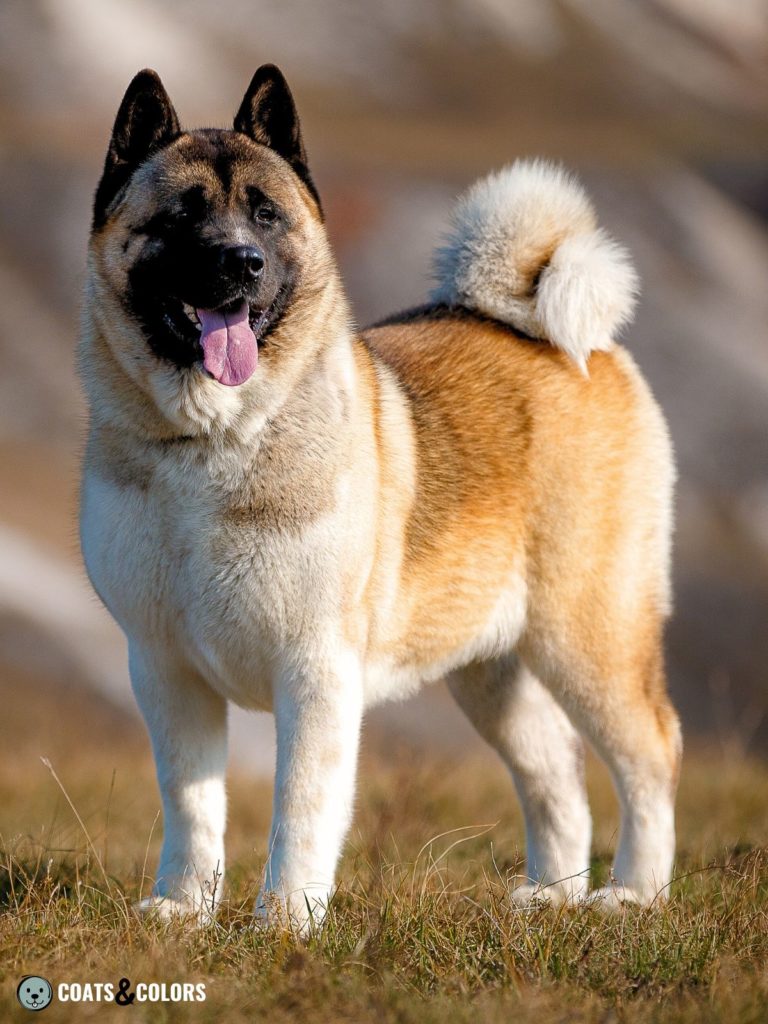
Akitas rarely come in clear sable (ky/ky Ay/-), most seem to be shaded sable (ky/ky Ays/-), often with unusually strong hair banding and lots of black hair tips. Dark shading is called black overlay in this breed. It can be very sparse or quite heavy and cover most of the neck, back and tail.
American Akita puppies usually show more black shading, some of which may fade over time. This is a common phenomenon in breeds with shaded sable coats.

American Akitas can have a melanistic mask (Em/-). They are even one of the dog breeds that very often express an extended black mask that covers more area than usual or amplifies shading.
And the American Akita often comes with white markings since piebald (sp) is very common in this breed. White markings can be rather minimal or cover larger areas (called pinto).
Some sable Akitas have countershading. And some dogs with white spotting and a black mask have watermarking! This refers to pigment concentrating along the edges of colored patches on white.

The phaeomelanin intensities and presence or absence of black hair tips, black masks, and white spotting leads to a great number of possible combinations, each with its own name in this breed:
Brown Akita
Dark phaeomelanin intensities are called brown. Many dark brown Akitas are actually shaded sable with black hair tips (ky/ky Ays/-). This adds to the overall darker look and is called brown, black overlay.
- can have black overlay and/or
- can have a black mask and/or
- can have white markings/pinto and/or
- can have a “white mask” (face-white, blaze)
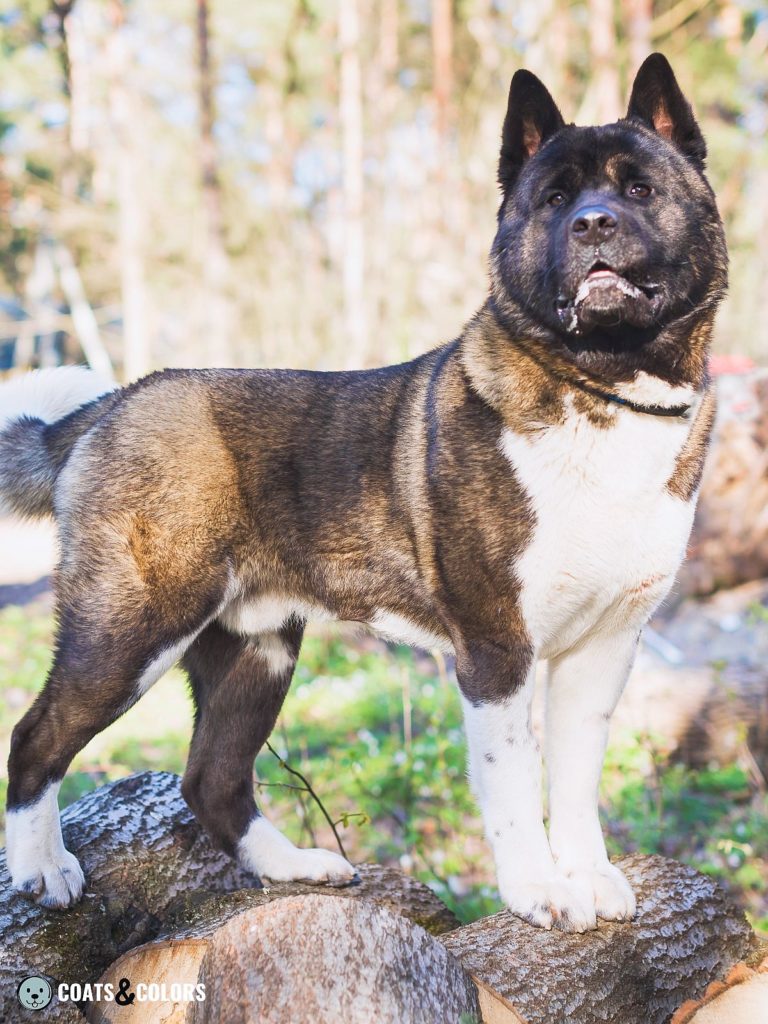

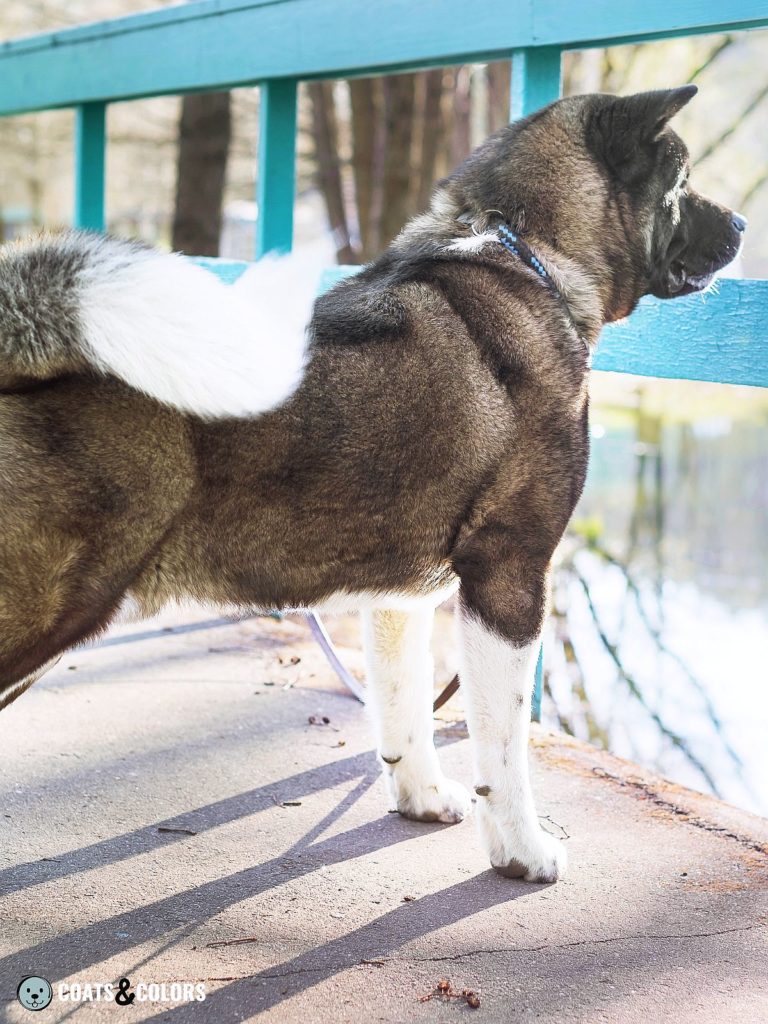
Red Akita
Red describes a medium phaeomelanin intensity looking orange-red. Just as the other shades of phaeomelanin, a red American Akita can also have shading, a black mask or white markings.
- can have black overlay and/or
- can have a black mask and/or
- can have white markings/ pinto and/or
- can have a “white mask” (face-white, blaze)

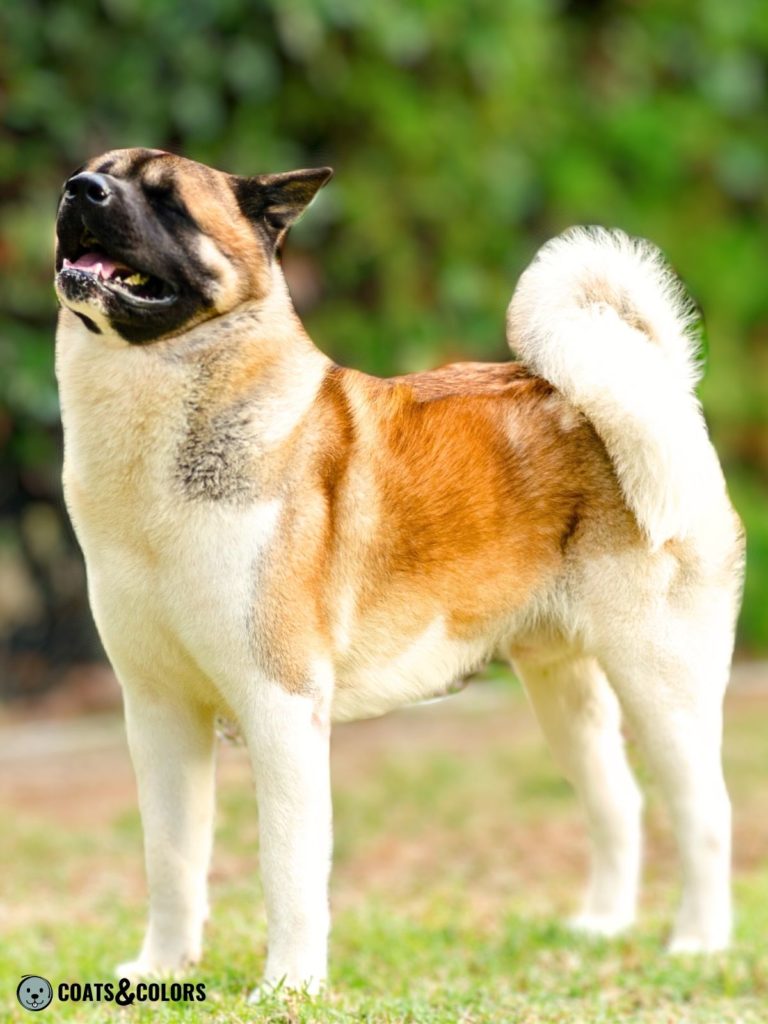

Fawn Akita
Fawn means lighter phaeomelanin intensities from yellow to blonde or tan.
- can have black overlay and/or
- can have a black mask and/or
- can have white markings/pinto and/or
- can have a “white mask” (face-white, blaze)
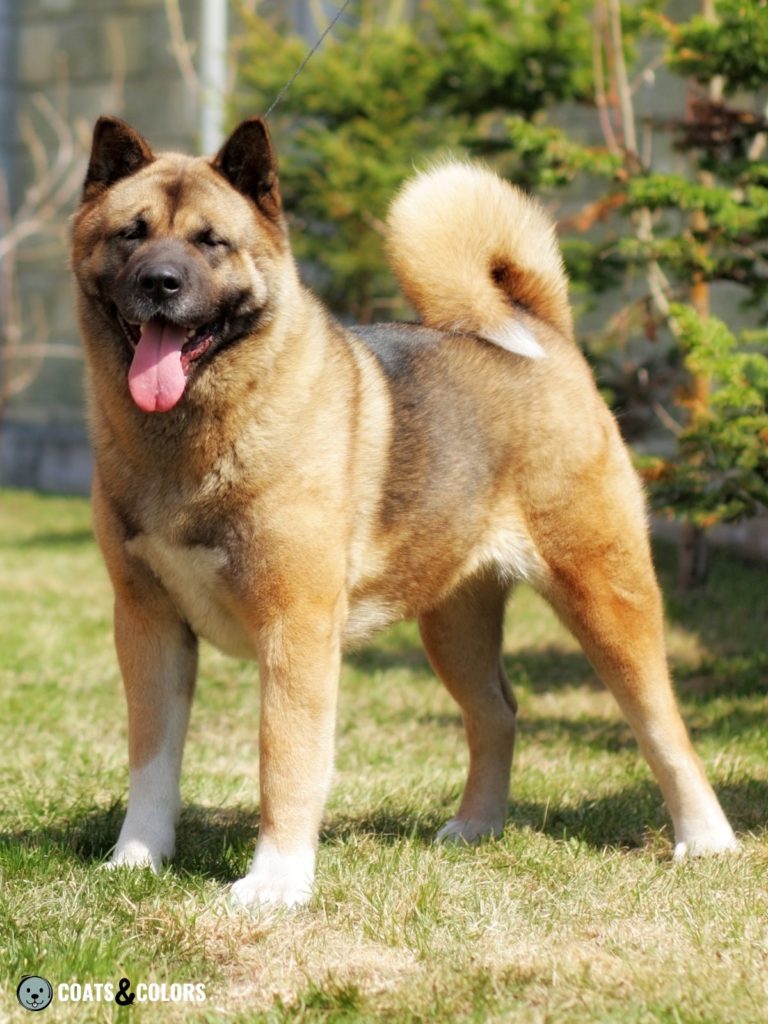
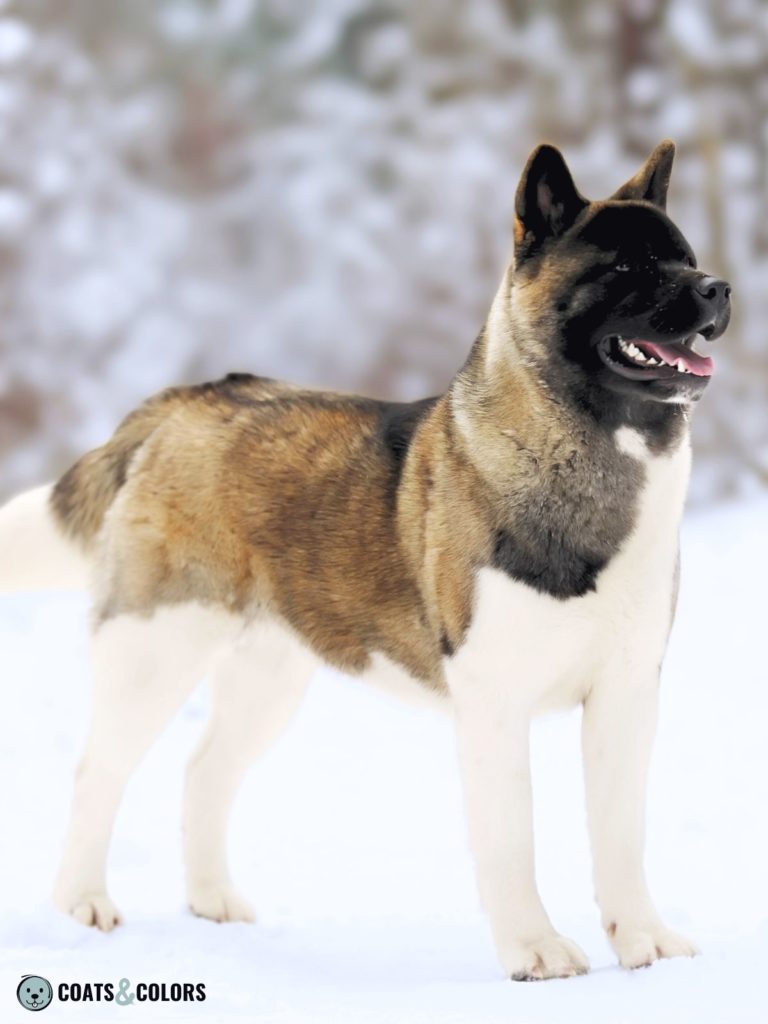
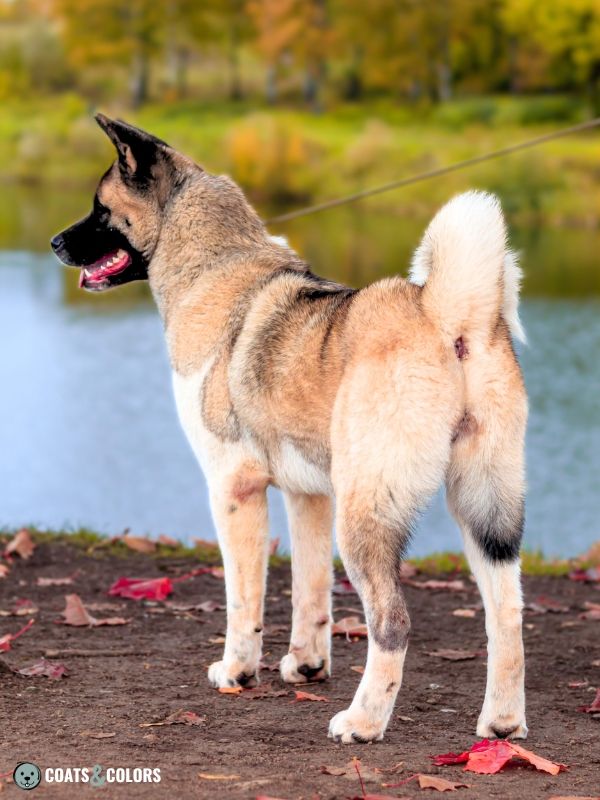
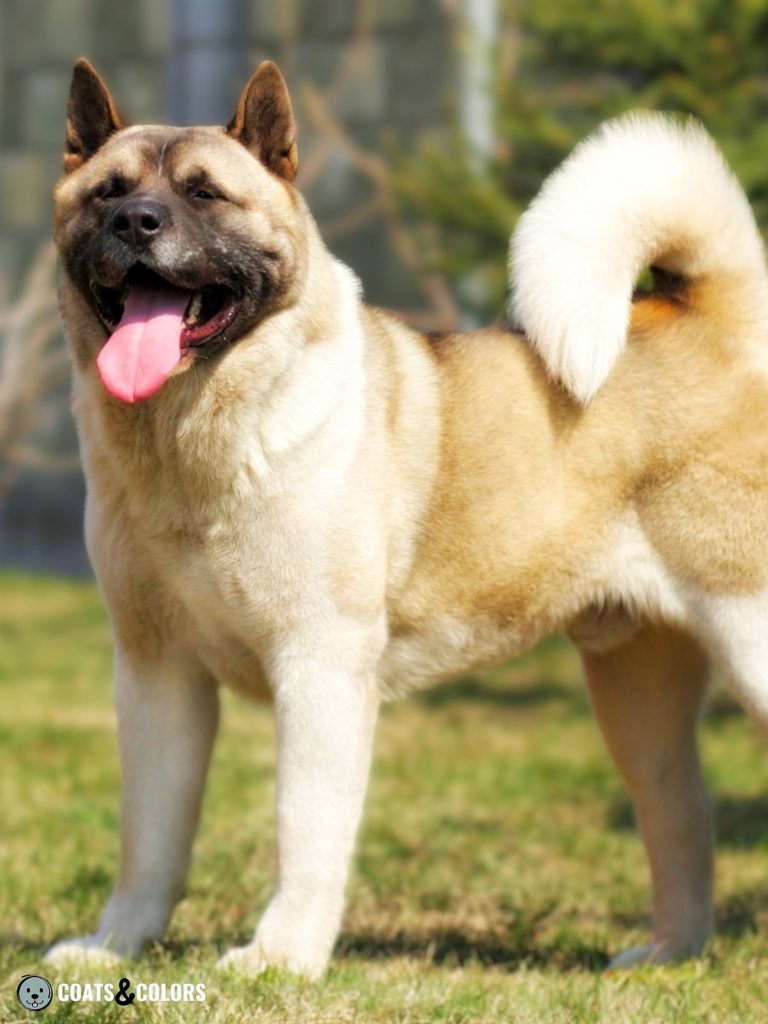
Silver Akita
Silver is used for the lightest possible phaeomelanin intensity which makes them look greyish to off-white. A grey or silver Akita should have no hint of fawn or red color. If an Akita dog looks grey and white, it probably has a sable pattern with silver phaeomelanin.
- can have black overlay and/or
- can have a black mask and/or
- can have white markings/pinto and/or
- can have a “white mask” (face-white, blaze)
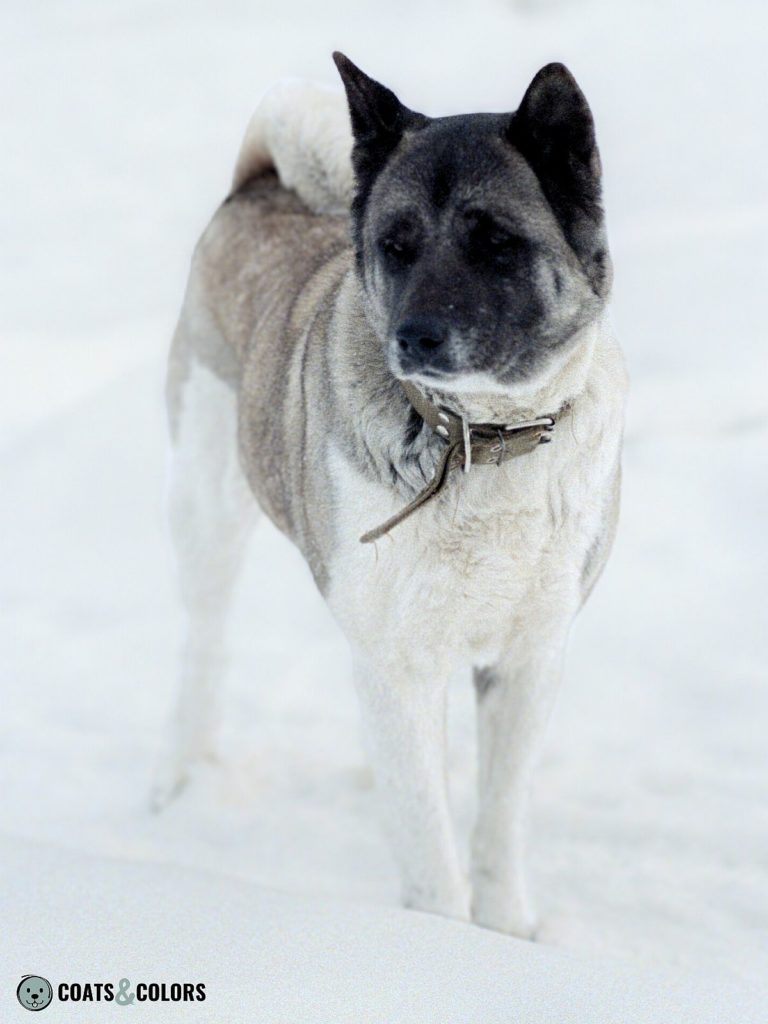
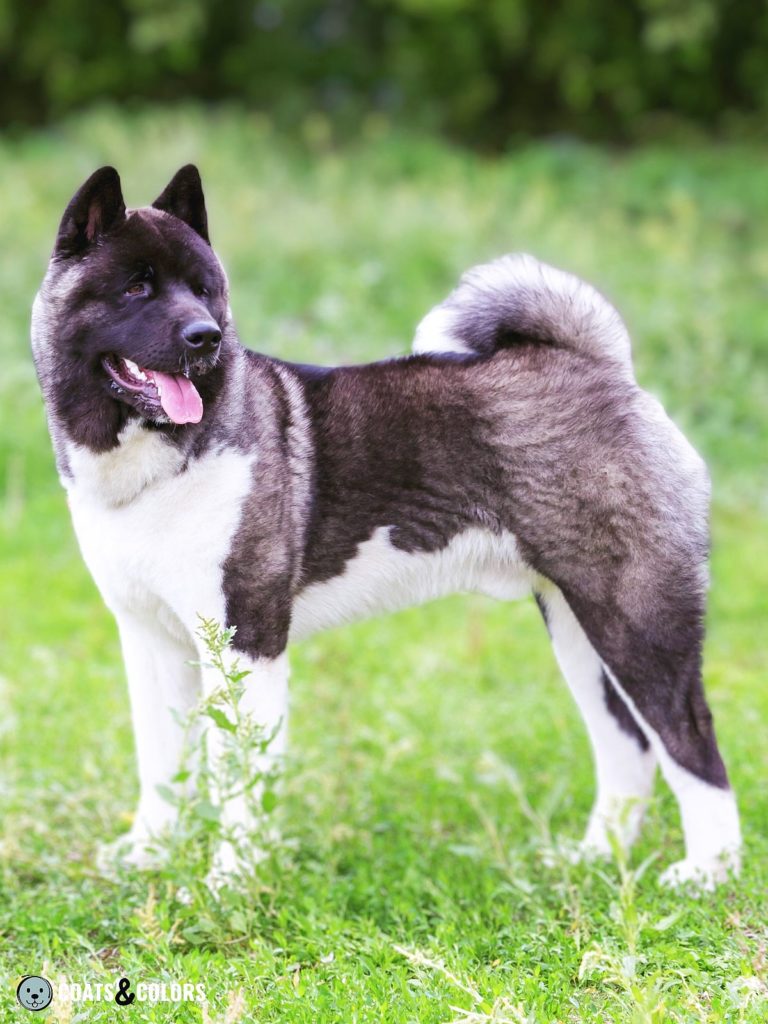

Brindle American Akita
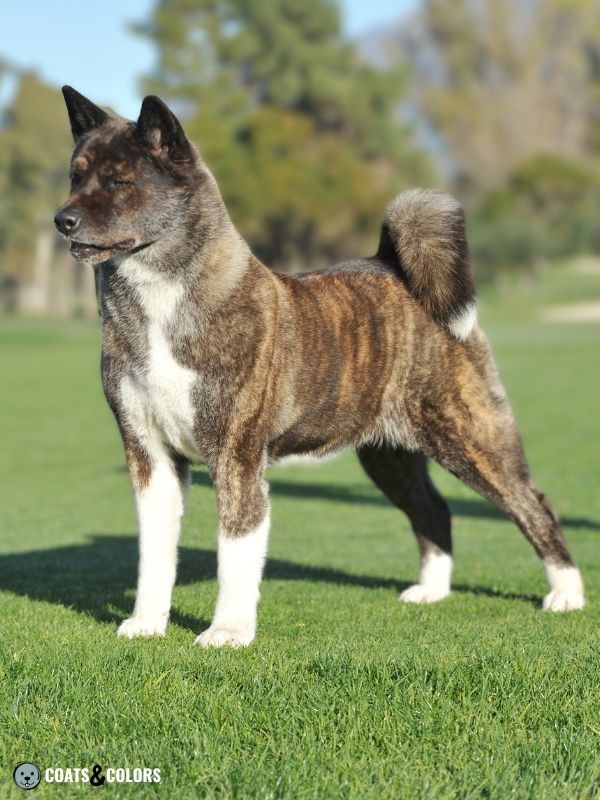
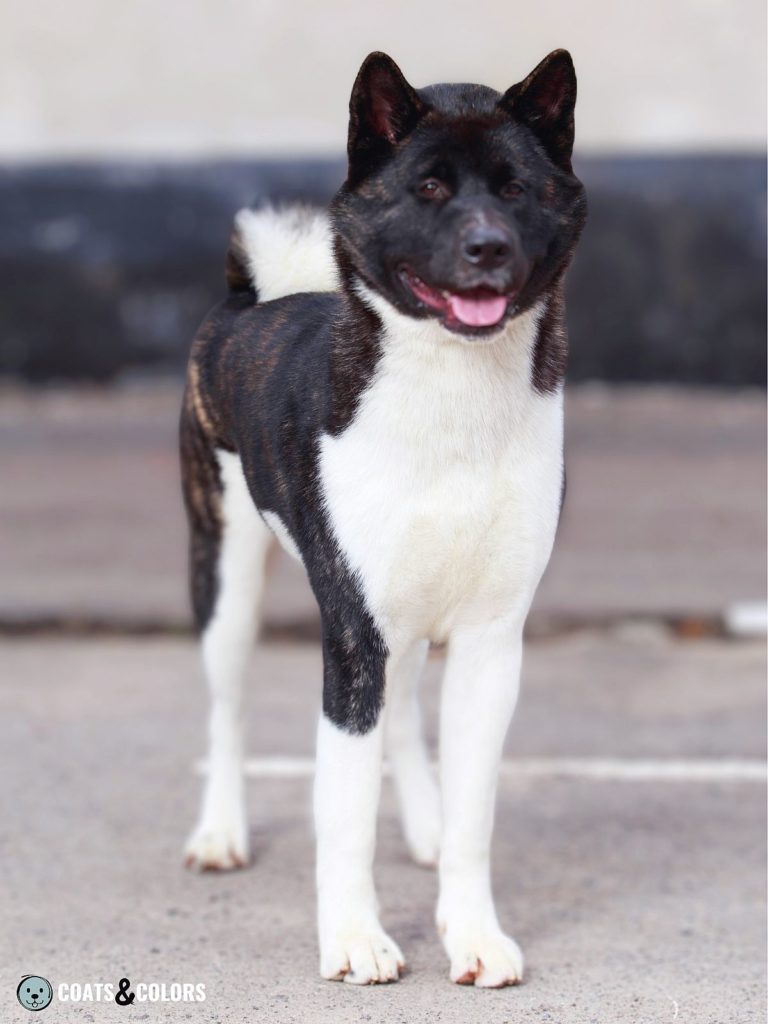
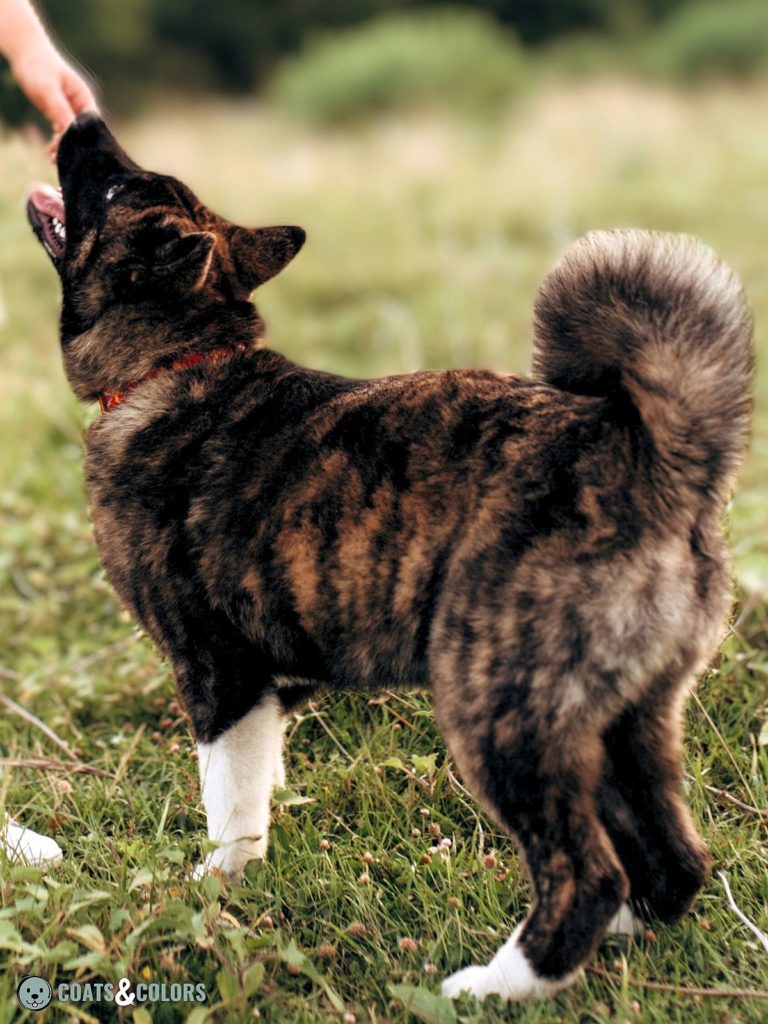

American Akitas can have a brindle pattern with black stripes (kbr/-).
Depending on the shade of phaeomelanin underneath the brindle pattern this is called brown brindle, red brindle, fawn brindle or silver brindle.
Any brindled Akita may also have a black mask, white spotting or some black overlay.
Dogs with a heavy brindle pattern are called black brindle.
These dogs might get their extra dark pattern from encouraging a dark brindle allele, lots of black shading or, in some rare cases, from actually being agouti brindle (kbr/- aw/-) or having an extended black mask. And black Akitas, see further below, can also be brindle.
White American Akita
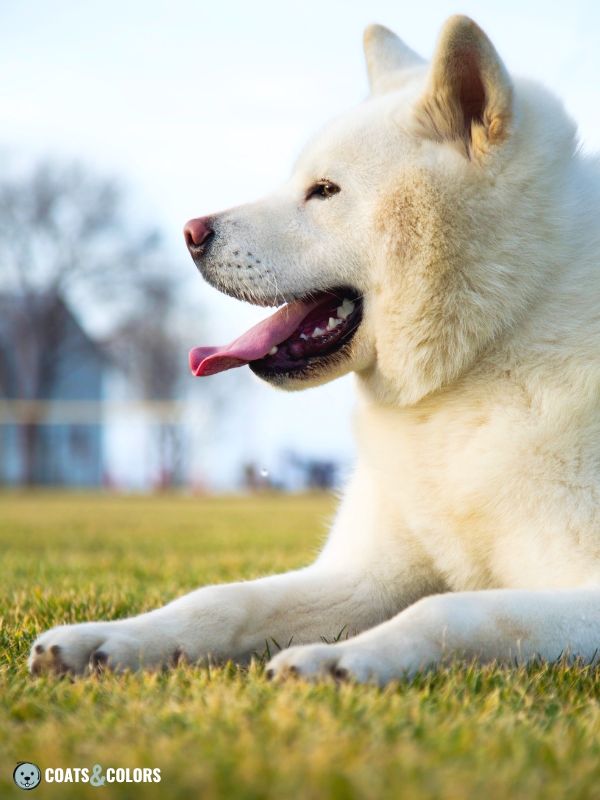

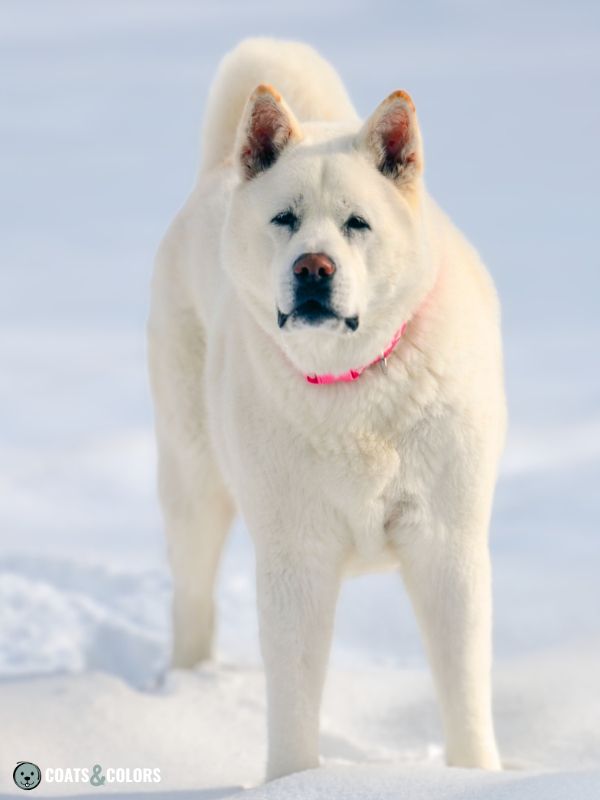
Solid white American Akitas are recessive red (e/e) with very low phaeomelanin intensity. Some white dogs might show a hint of red pigment in their white coats, sometimes called red shading.
Anyway, these dogs can never express a pattern that requires black pigment such as masks, black overlay or brindle stripes.
And like any recessive red dog, they are prone to fading nose pigment.
An all-white American Akita should never be an extreme piebald. So you will never see a white Akita with blue eyes since these dogs don’t truly lack pigment. Their phaeomelanin is just very, very pale.
Still, a white American Akita might also have piebald markings. It’s just impossible to see the contrast between their lightly pigmented patches and any white markings.
Black American Akita
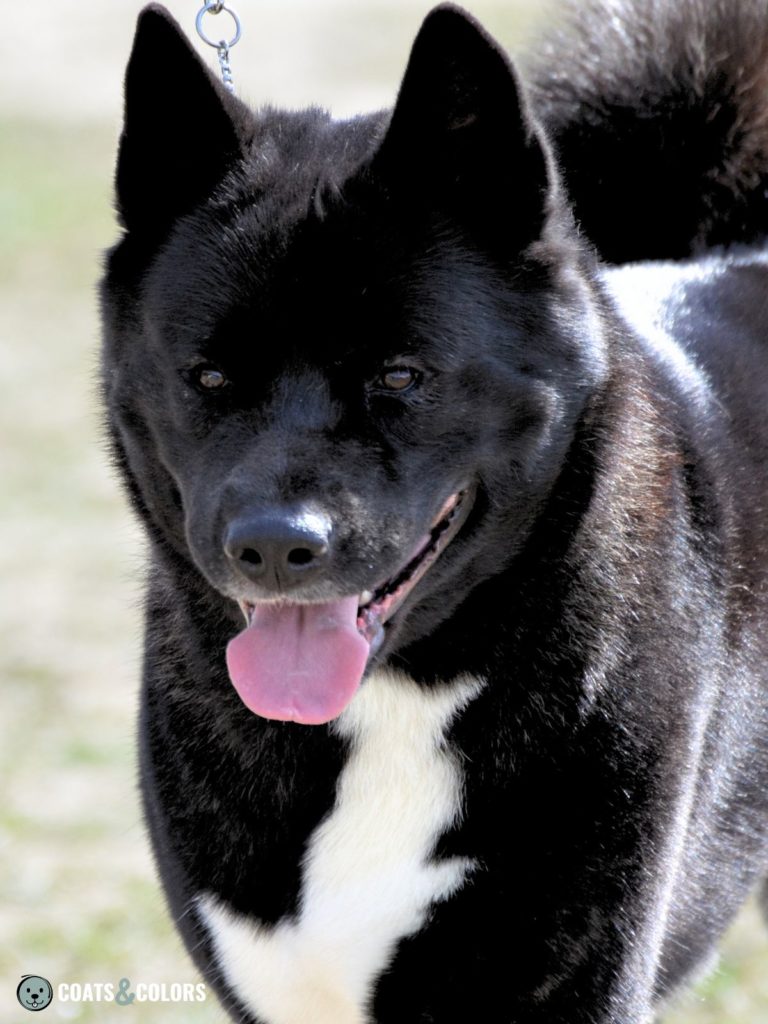
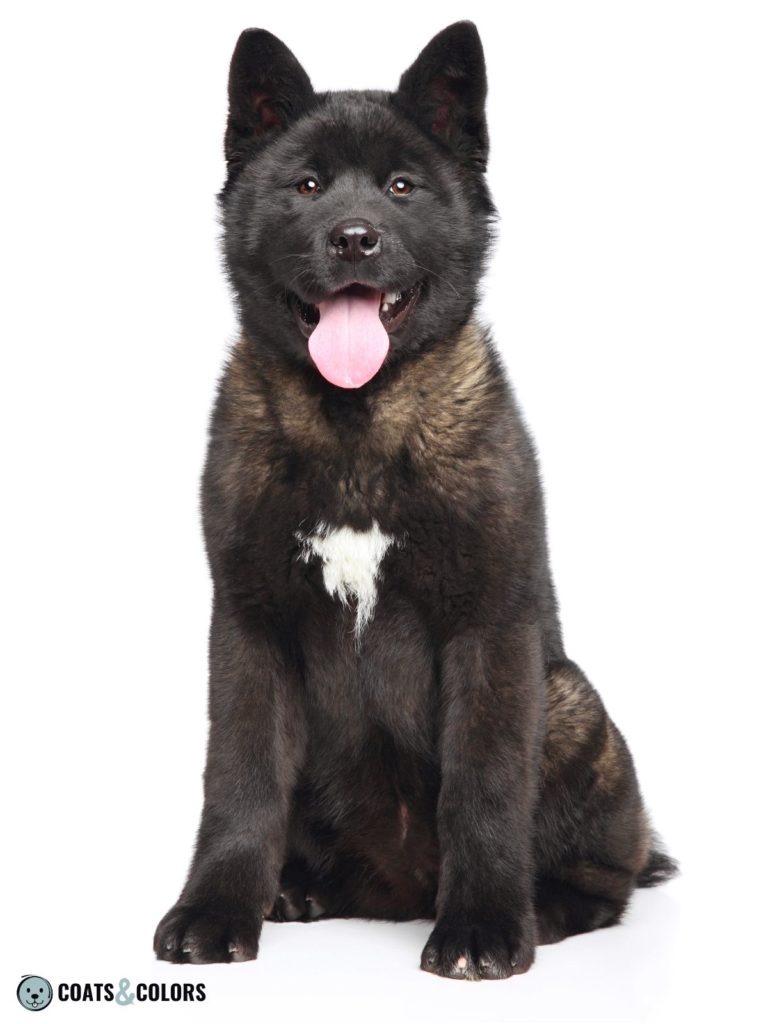
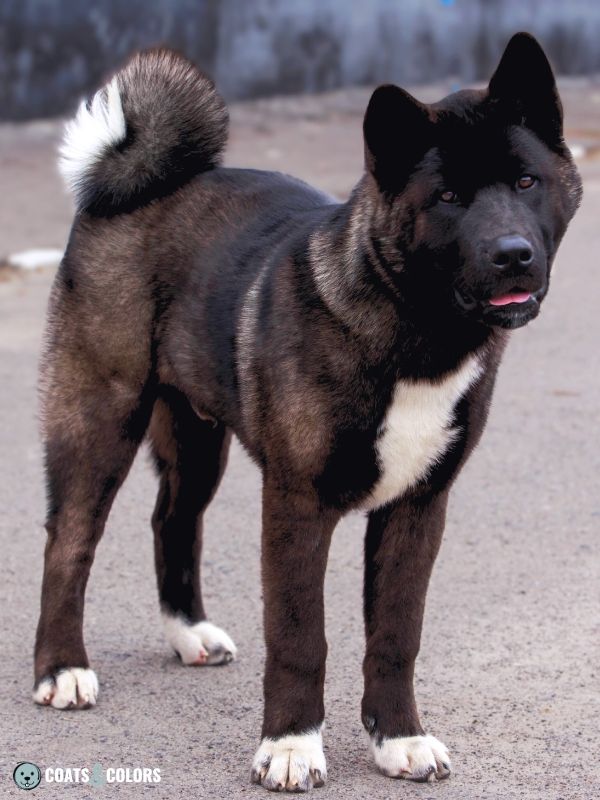
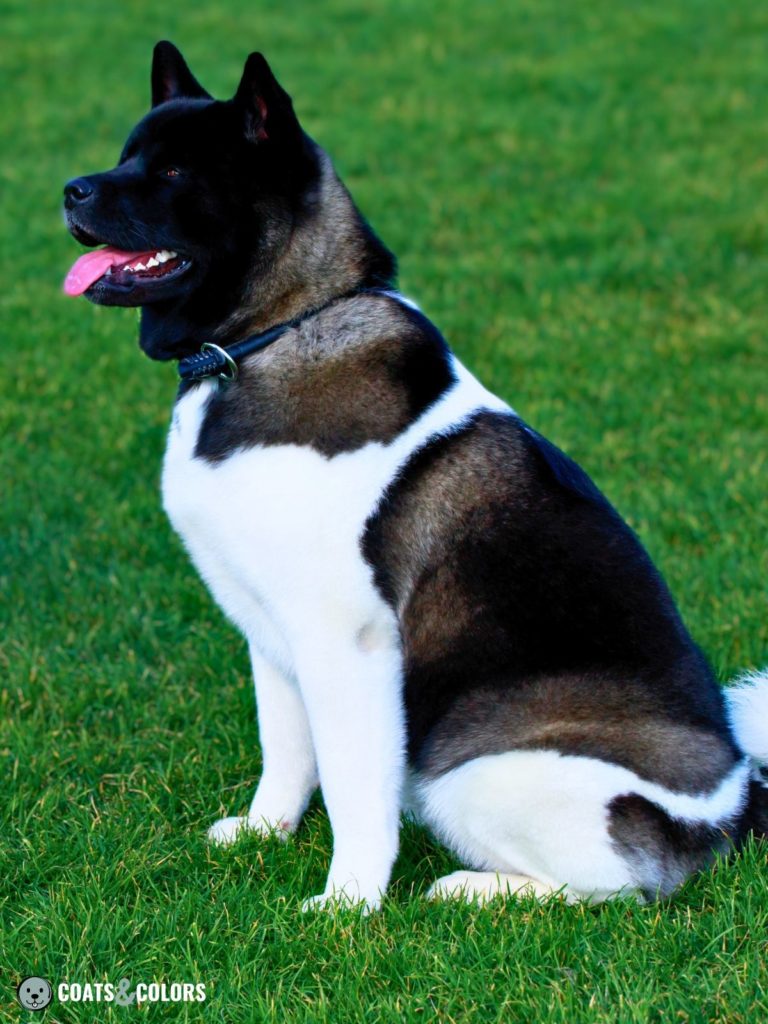

In Akitas, “black” is often used to describe any dog with an unusually dark color pattern. Black Akitas are commonly darker than dogs with just an abundance of dark overlay (“shaded black“).
Black Akitas often have an undercoat of a lighter brownish, red, fawn or silver color and a somewhat solid black saddle. They can come with white markings (black & white).
But the genetics of black American Akitas are somewhat of a mystery.
Even black American Akitas usually don’t come with a solid black coat, they always seem to have some level of phaeomelanin shading. Recessive black (a) only occurs in about 1 % of purebred dogs and dominant black (KB) does not exist in the breed, at least not officially[4].
But maybe this is one of the cases where brindle reverts back to dominant black in some dogs?
Many black Akitas display a color pattern similar to a a seal phenotype, a leaky version of dominant black (KB). But according to breeders, they don’t breed as such, so there must be more to it.
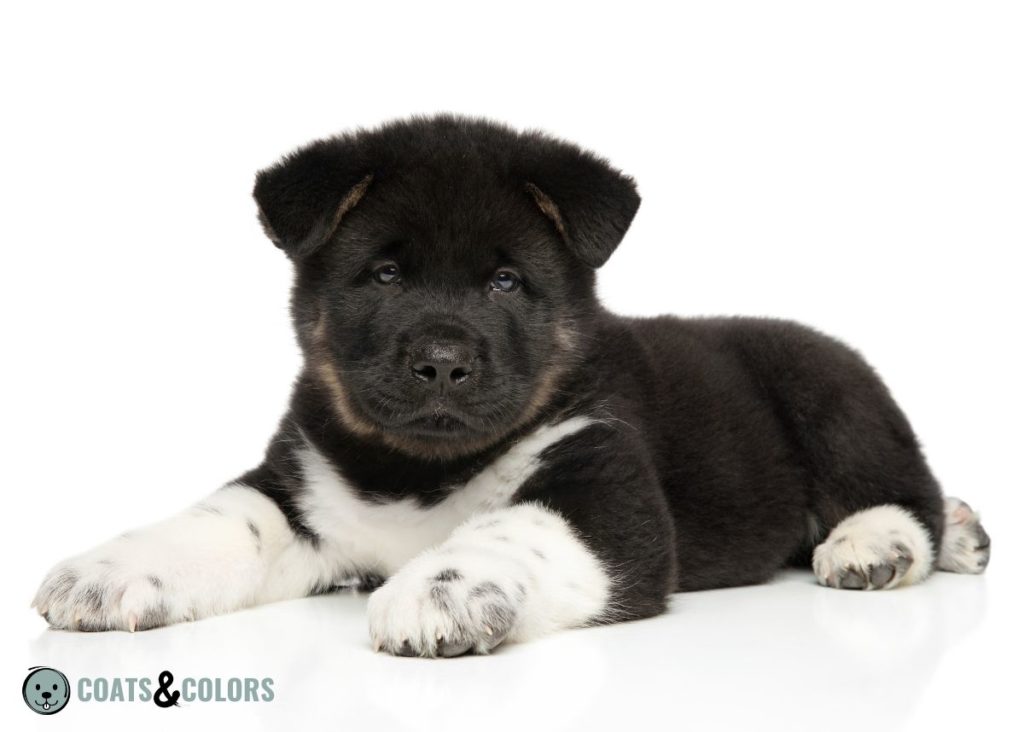
Puppies can have very dense black overlay looking almost solid black.
Some of these almost black dogs might, in fact, be extremely heavy-shaded sables with an extended black mask (Em/- ky/ky Ays/-). Some might be heavily masked and agouti patterned (Em/- ky/ky aw/-).
American Akitas are often just classified by descriptive lingo.
So many of the darker seal-like or agouti-patterned dogs are falsely classified as shaded sables with dark overlay. Purely descriptive systems don’t always make sense.
Non-Standard American Akita Coat Colors
Non-standard colors occur in any dog breed.
Most breeders try to avoid them, others breed these rare American Akita colors on purpose. And sometimes these non-standard colors occur by accident due to recessive alleles.
Liver American Akita
A very, very small percentage of Akitas carry a gene variant for liver-colored eumelanin (bs)[4].
Recessive traits like liver (b) will only be expressed in homozygous dogs (b/b) that inherited one copy from their dam and one from their sire. But through carriers (B/b) these traits can be passed on over many generations.
In other breeds a liver-colored coat is commonly called brown. But in Akitas, the term “brown” is reserved for dark and shaded areas of phaeomelanin.
Merle American Akita
Some backyard breeders produce blue merle Akita puppies on purpose. But a merle American Akita is so not a standard color, so the merle allele is likely to come from some recent outcrossing.
American Akita Coat Colors Overview
The breed standard describes all the different traits an American Akita should have.
This includes his conformation and temperament but also the coat texture and color of an ideal representative of this breed.
The major kennel clubs often use their own standards provided by their affiliated breed club. These standards are usually similar in their general outline but can differ in many details like coat color.
American Akita coat colors and patterns[1-3] come in a variety of shades and may have an undercoat that is lighter than the outer coat. Akitas can have white markings, black overlay on sable or agouti, a black mask or a brindle pattern.
Akitas with some combination of red, black and white in the coat are sometimes inaccurately called “tricolor” because they display three colors. While this is a breed term in American Akitas, the majority of breeds use tricolor exclusively to describe a tan point pattern with white.
Not every standard mentions all the possible combinations of colors and markings. Still, all major clubs except the typical American Akita dog colors:
| AKC | FCI | KC | |
|---|---|---|---|
| Brindle – any base color – can have white markings – can have black overlay – can have black mask | ✅ | ✅ | ✅ |
| Black – black overlay, black mask – can have white markings – might have lighter undercoat | ✅ | ✅ | ✅ |
| “Brown“ – can have white markings – can have black overlay – can have black mask | ✅ | ✅ | ✅ |
| Red – can have white markings – can have black overlay – can have black mask | ✅ | ✅ | ✅ |
| Fawn – can have white markings – can have black overlay – can have black mask | ✅ | ✅ | ✅ |
| Silver – can have white markings – can have black overlay – can have black mask | ✅ | ✅ | ✅ |
| White – can have red shading | ✅ | ✅ | ✅ |
American Akita Coat Color Genetics
A dog’s coat gets its colors from two pigment types called eumelanin and phaeomelanin. Different proportions of colors in a particular dog’s coat create different patterns.
Most American Akitas are sable (ky/ky Ay/- or Ays/-) or brindle (kbr/- Ay/- or Ays/-) with a black mask (Em) and white markings (sP). But fully patterned dogs without any white (S/S) are quite uncommon.
Black is an umbrella term for very dark-colored dogs and is considered one of the most rare Akita colors. Very few dogs are agouti-patterned (aw/-) or have a saddle pattern (asa/-). Even less are truly solid recessive black (a/a).
Surprisingly, domino (eG) was found in American Akitas[4].
All the different colors of Akitas are produced by only some of all the possible alleles found in dogs. These are the genes and alleles involved in American Akita’s standard coat colors and patterns:
| E-LOCUS | Em = melanistic mask E = normal pattern eG = domino (rare!)[4] e = recessive red |
| K-LOCUS | kbr = brindle ky = normal pattern Please note that brindle tests as KB/ky! |
| A-LOCUS | Ay = sable Ays = shaded sable aw = agouti (rare!)[6] asa = saddle pattern (rare!) a = recessive black (rare!) |
| B-LOCUS | B = black |
| D-LOCUS | D = normal pigment |
| S-LOCUS | S = no spotting sp = white spotting |
| M-LOCUS | m = non-merle |
Eumelanin Colors
American Akitas are fixed for black pigment Even if not present in a dog’s coat color pattern it is always eumelanin that gives color to a dog’s nose, skin, nails or eyes.
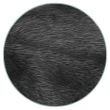
Phaeomelanin Intensity
The phaeomelanin intensities in American Akitas are officially called white (in recessive red dogs) or silver, fawn, red or brown (in sable or brindle dogs).
But many descriptive terms like tan, blonde, yellow, orange or grey are used to describe different shades of red.

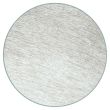
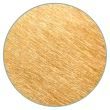

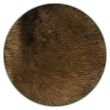
White Spotting
Akitas also very often come with some degree of white coat. The majority of dogs seem to have at least one piebald allele (sP), the allele for a solid-colored coat (S) is quite rare [4].
Dogs with S/sp often display a pseudo-Irish pattern with a white chest patch, white tail tip, white feet or a white blaze. And some can have residual white.
But most dogs in this breed seem to be homozygous for white spotting (sP/sP).
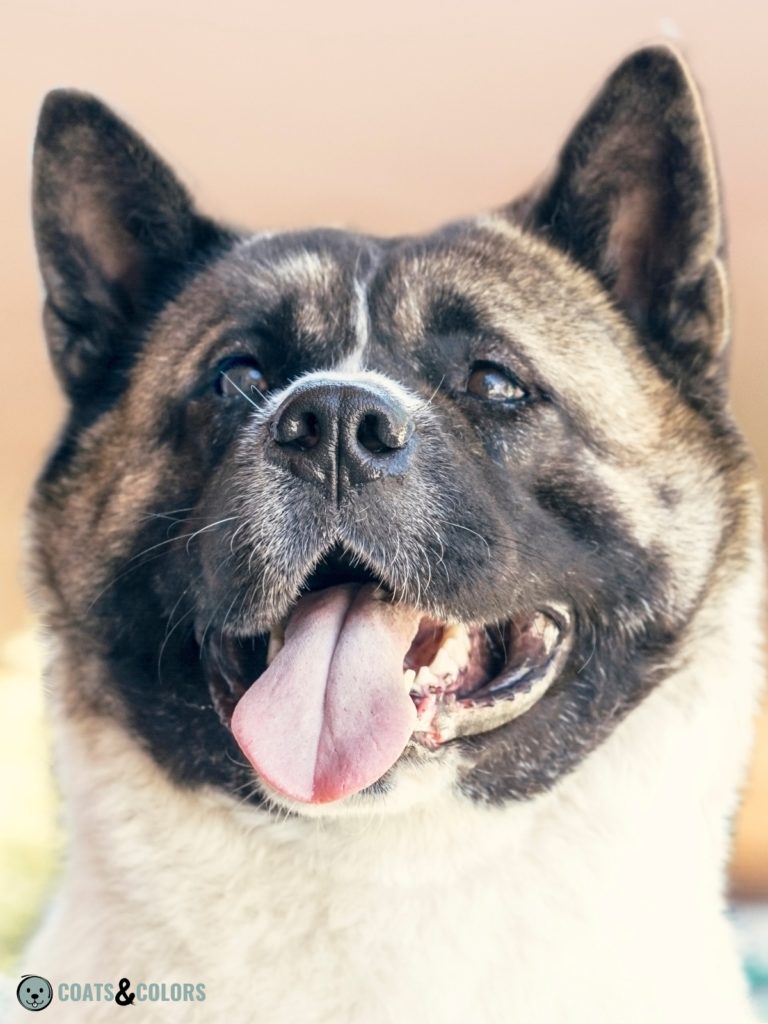
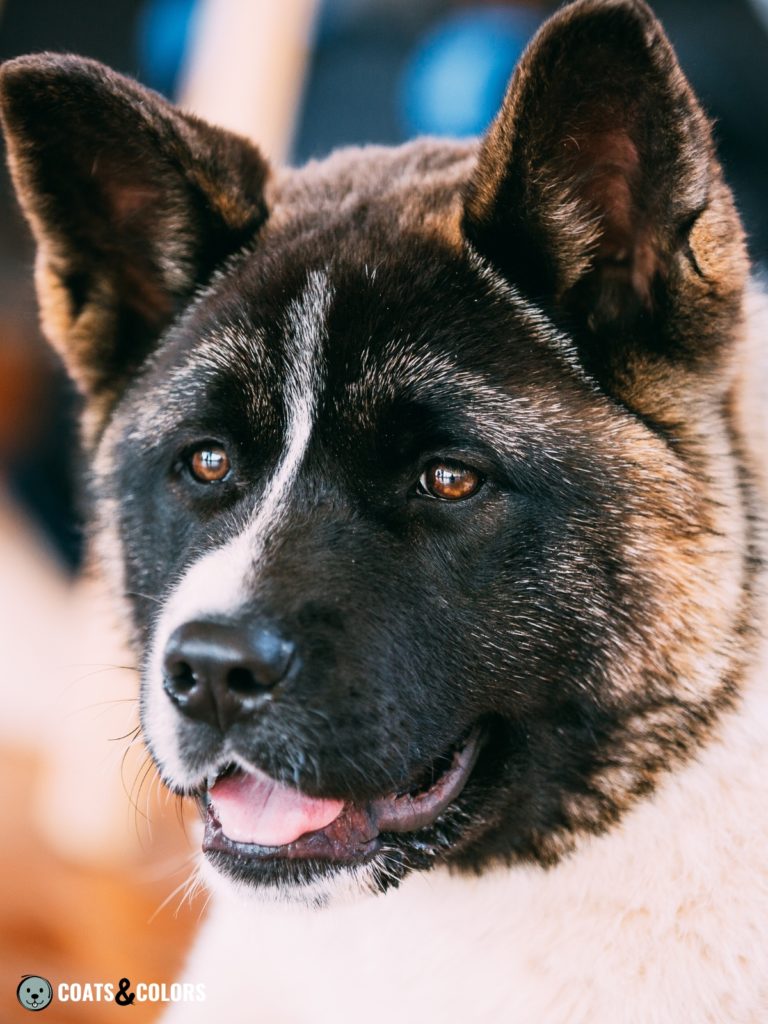

If a dog has at least some white coat on its muzzle, American Akita people call this a white mask. Face white is usually accompanied by at least moderate white markings on the neck, chest, belly, legs and tail.
If a dog has body white and face white they are called white mask, white markings. This is used to distinguish them from dogs that have either only a white mask or only white markings on the body but with a fully-colored facial pattern. By the way, some Akitas come with light ticking.
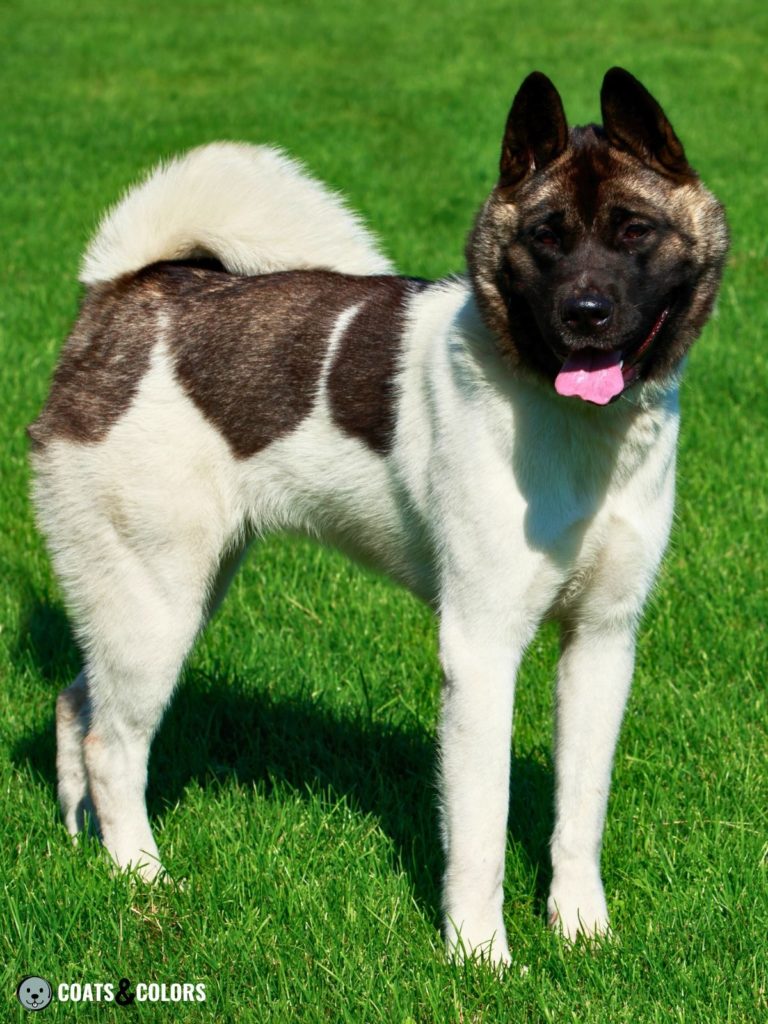
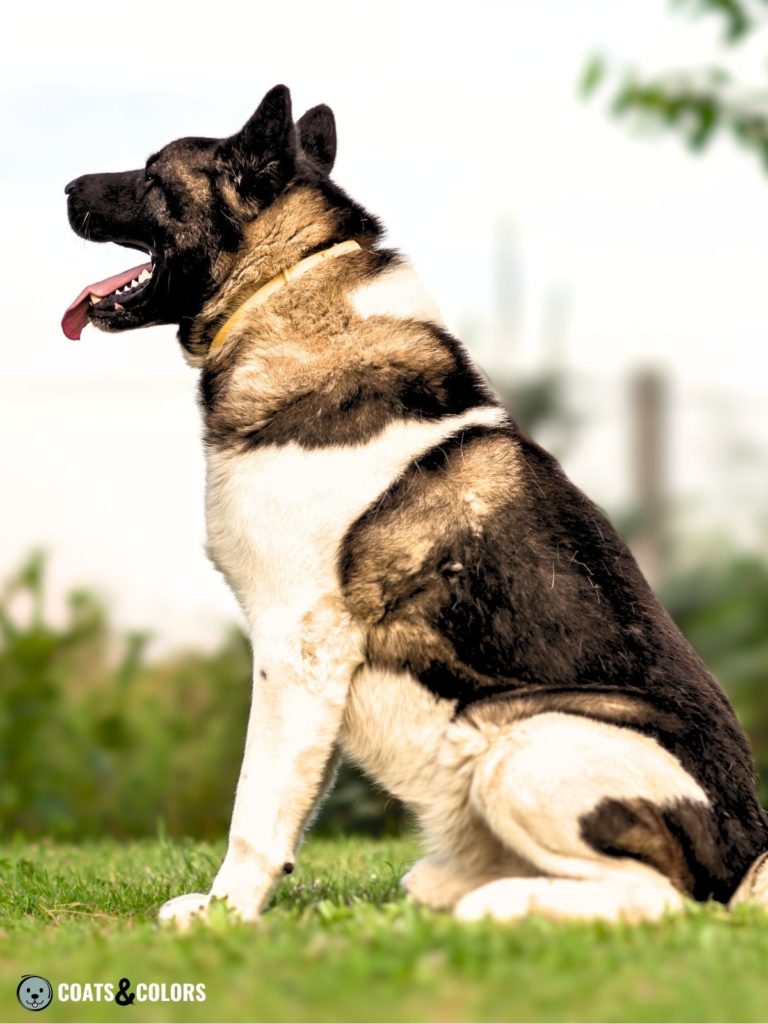

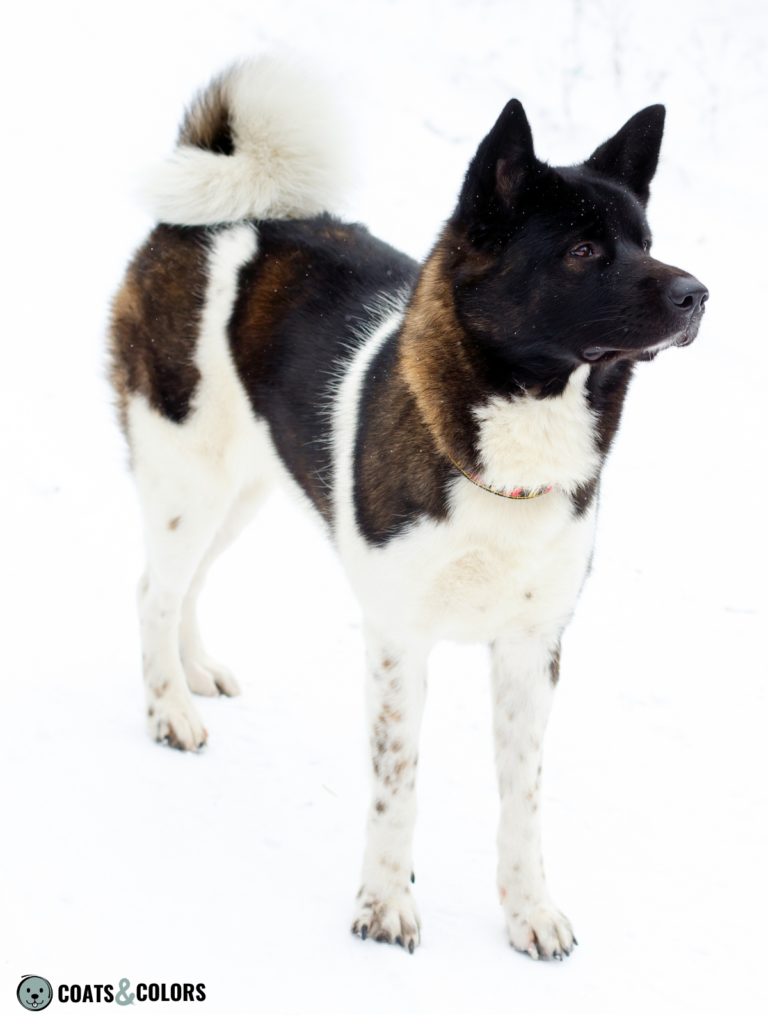
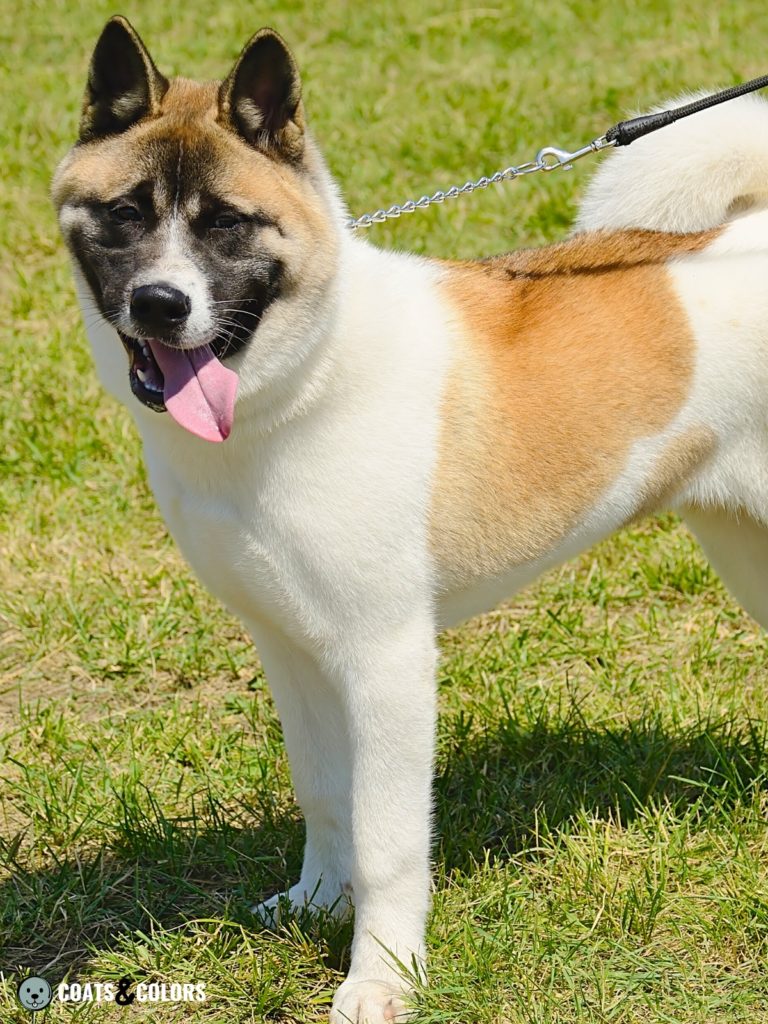
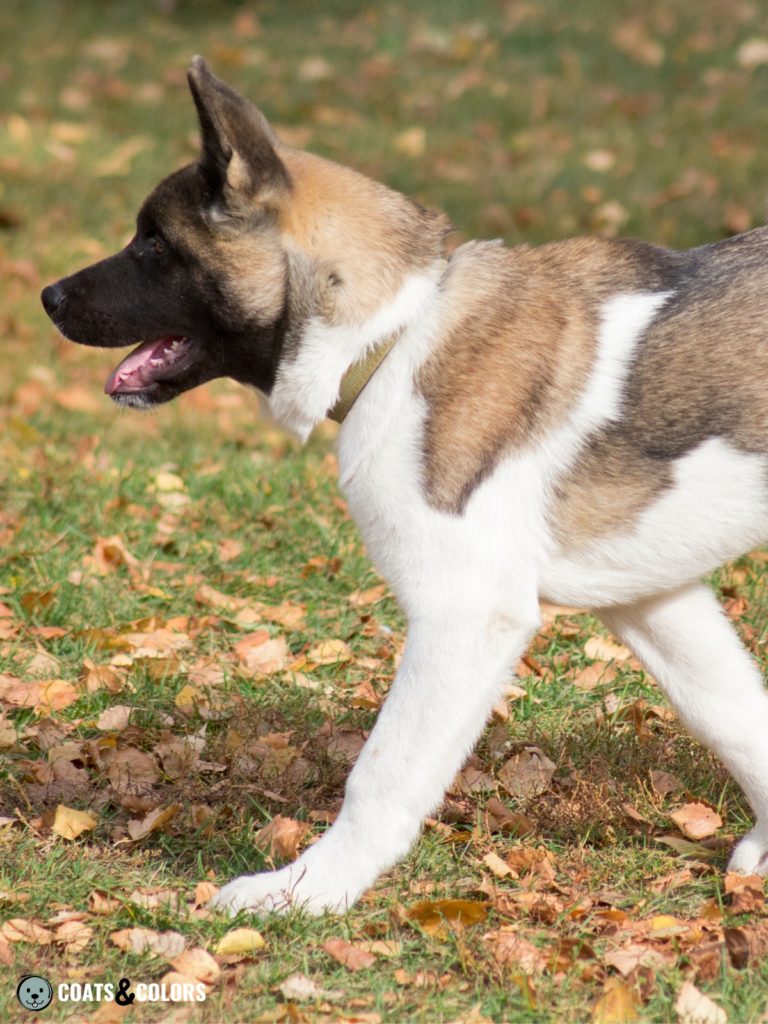
A typical piebald pattern (sP/sP) with white markings that cover more than 1/3 but less than 2/3 of the body is called pinto in this breed. Pintos can come with face-white (pinto, white mask) or not.
And some dogs have even more than 2/3 of body-white since piebald is not fully predictable. Solid white dogs with a colored head are called white with a colored mask or simply hooded.
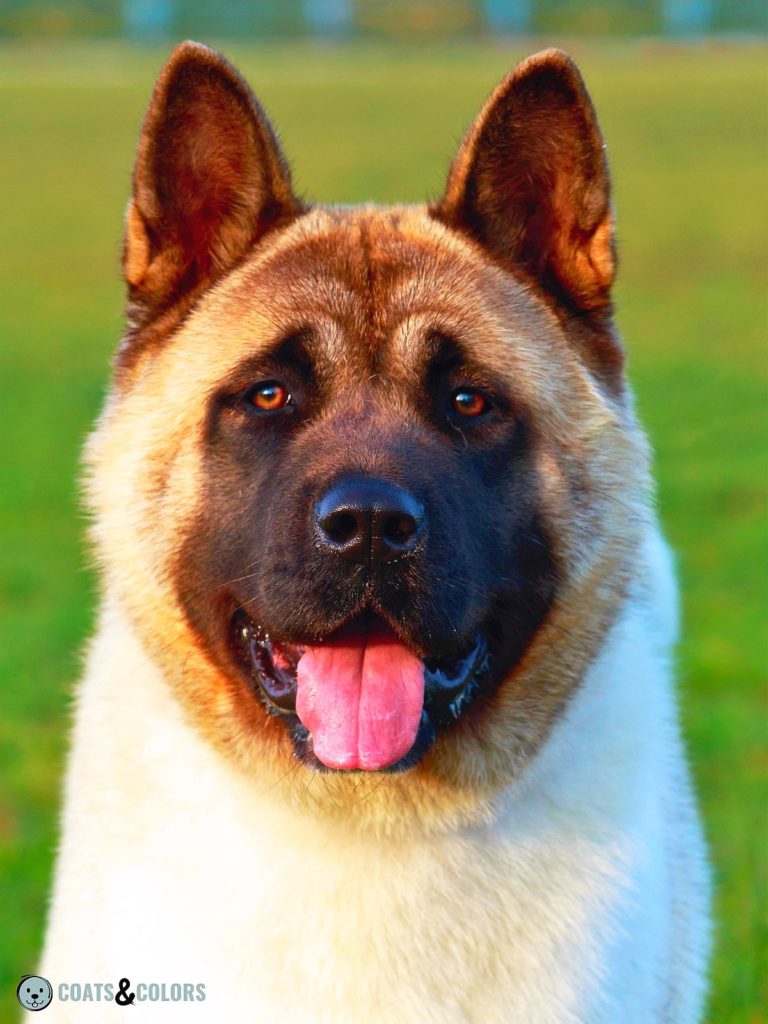
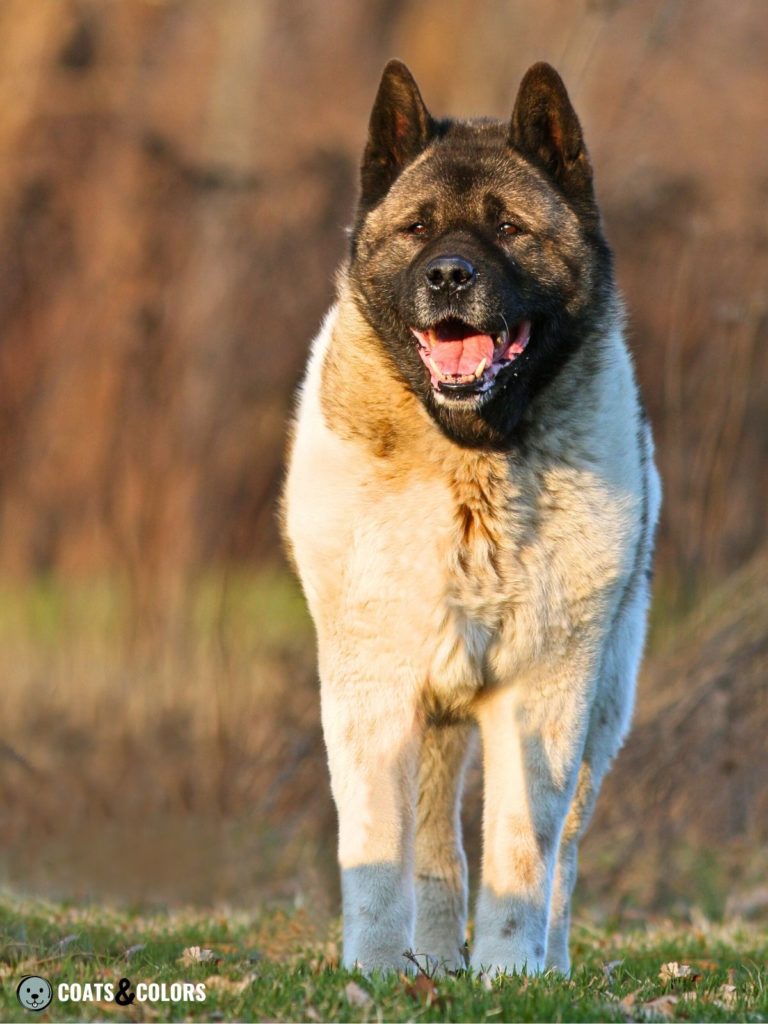

Color Patterns
The accepted patterns in a dog breed describe the distribution of colors in a dog’s coat. Dogs can be solid-colored or have a pattern with more than one color.
Breed standards almost always use breed-specific and purely descriptive terms. It’s sometimes on us to translate breed standard terminology into more universal genetic terms.
And that can be quite tricky… Sometimes the same term is used for colors that are caused by different genes. And in other cases, genetically similar phenotypes have many different names.
| Color Term | Genotype |
|---|---|
| White White, Red Shading | e/e |
| Brown/Red/Fawn/Silver | E/- ky/ky Ay/- + phaeomelanin intensity |
| Brown/Red/Fawn/Silver + Black Overlay | E/- ky/ky Ays/- + phaeomelanin intensity |
| Brown/Red/Fawn/Silver + Black Mask | Em/- ky/ky Ay/- or + phaeomelanin intensity |
| Brown/Red/Fawn/Silver + Black Overlay + Black Mask | Em/- ky/ky Ays/- + phaeomelanin intensity |
| Brown/Red/Fawn/Silver + White Markings/Pinto | E/- ky/ky Ay/- sP/– + phaeomelanin intensity |
| Brown/Red/Fawn/Silver + Black Overlay + White Markings/Pinto | E/- ky/ky Ays/- sP/– + phaeomelanin intensity |
| Brown/Red/Fawn/Silver + Black Mask + White Markings/Pinto | Em/- ky/ky Ay/- sP/– + phaeomelanin intensity |
| Brown/Red/Fawn/Silver + Black Overlay + Black Mask + White Markings/Pinto | Em/- ky/ky Ays/- sP/– + phaeomelanin intensity |
| Brown/Red/Fawn/Silver + Brindle | E/- kbr/– Ay/- + phaeomelanin intensity |
| Brown/Red/Fawn/Silver + Black Overlay + Brindle | E/- kbr/– Ays/- + phaeomelanin intensity |
| Brown/Red/Fawn/Silver + Black Mask + Brindle | Em/- kbr/– Ay/- or + phaeomelanin intensity |
| Brown/Red/Fawn/Silver + Black Overlay + Black Mask + Brindle | Em/- kbr/- Ays/- + phaeomelanin intensity |
| Brown/Red/Fawn/Silver + White Markings/Pinto + Brindle | E/- kbr/- Ay/- sP/– + phaeomelanin intensity |
| Brown/Red/Fawn/Silver + Black Overlay + White Markings/Pinto + Brindle | E/- kbr/- Ays/- sP/– + phaeomelanin intensity |
| Brown/Red/Fawn/Silver + Black Mask + White Markings/Pinto + Brindle | Em/- kbr/- Ay/- sP/– + phaeomelanin intensity |
| Brown/Red/Fawn/Silver + Black Overlay + Black Mask + White Markings/Pinto + Brindle | Em/- kbr/- Ays/- sP/– + phaeomelanin intensity |
| Black | Em/- ky/ky aw/- or Em/- kbr/- aw/- or Em/- kbr/- Ays/- or ky/ky a/a (?) |
American Akita Nose and Eye Colors
Different proportions of colors in a particular dog’s coat create different patterns. And a dog’s coat gets its colors from two pigment types called eumelanin and phaeomelanin.
These pigment types can both come in different shades. But American Akitas like most dog breeds can only produce some of all the possible colors.
Eye and Nose Colors in American Akitas
All American Akitas are fixed for black eumelanin pigment (B/B D/D).
So whatever an American Akitas coat color pattern, he should have brown eyes, a black nose and black pigment on the lips, eye rims, paw pads or nails. Dark brown eyes are preferred but some dogs do have lighter eyes.
Since white Akitas are recessive red their nose and lip pigment can be pale and look a little more flesh-colored, brownish or grayish and not solid black.
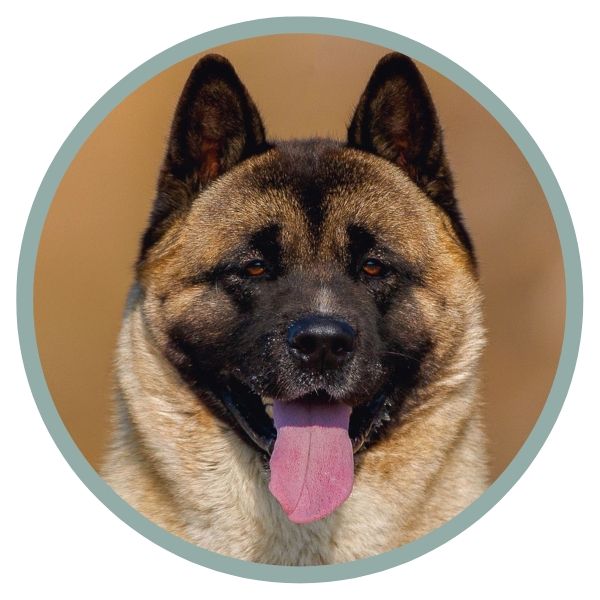
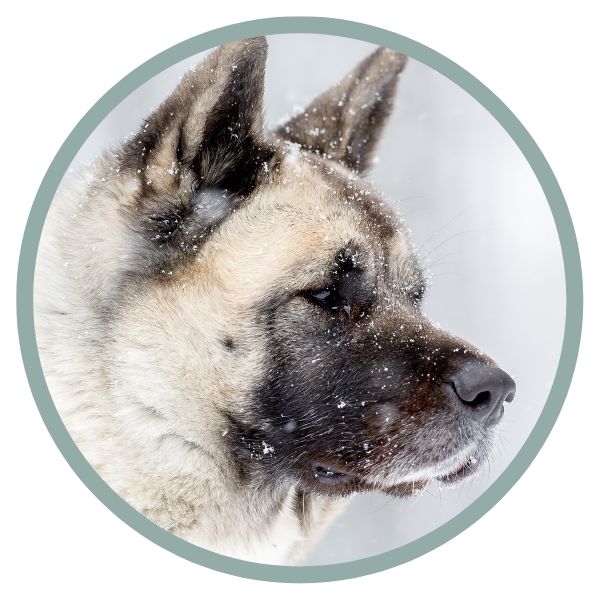
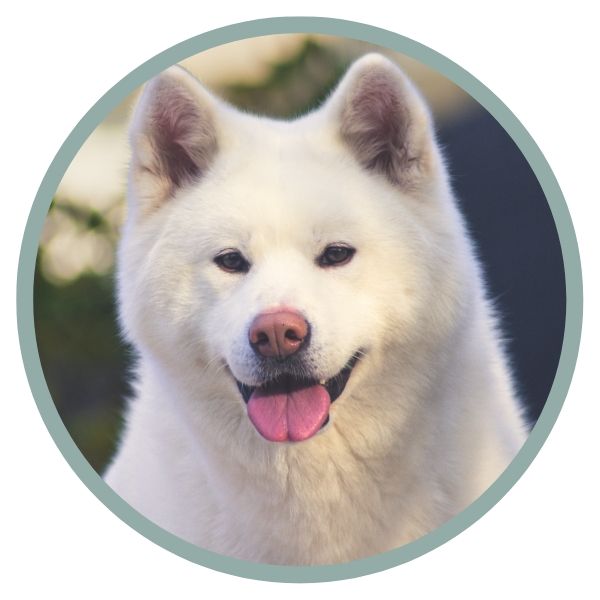
American Akita Coat Types
American Akitas have a smooth double coat with coarse guard hairs and a soft and dense undercoat.
Individual hairs are long enough to stand off the body, typical for spitz-type breeds. But an American Akita should have no ruff or feathering since genetically it is a short-haired dog breed.
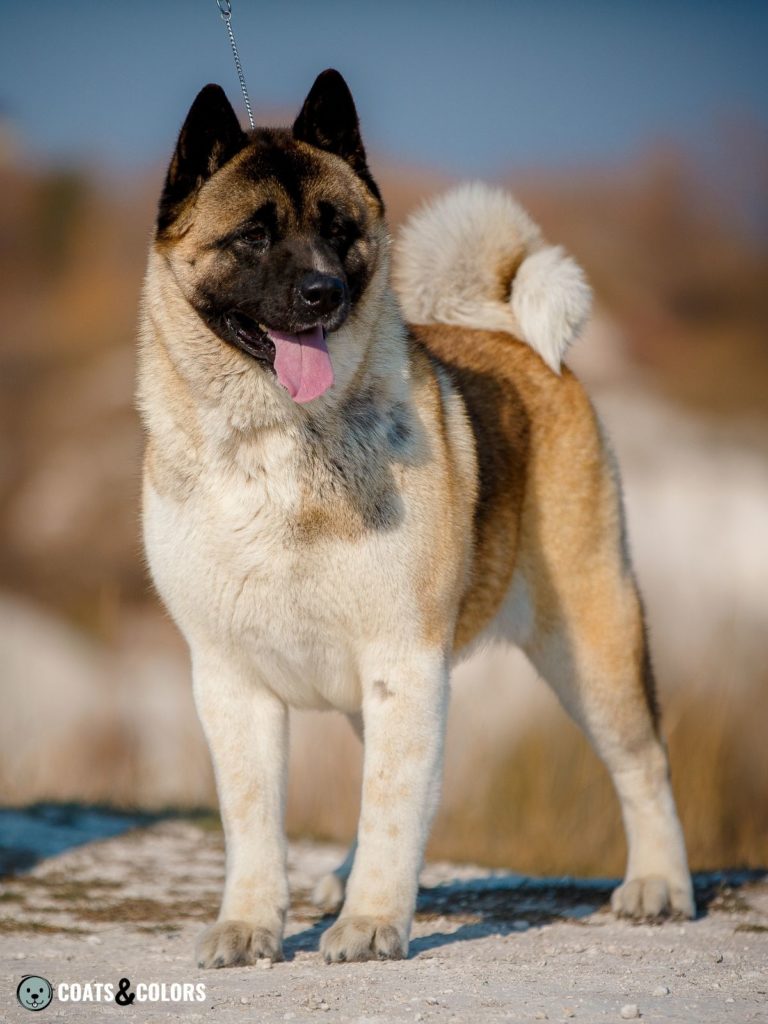
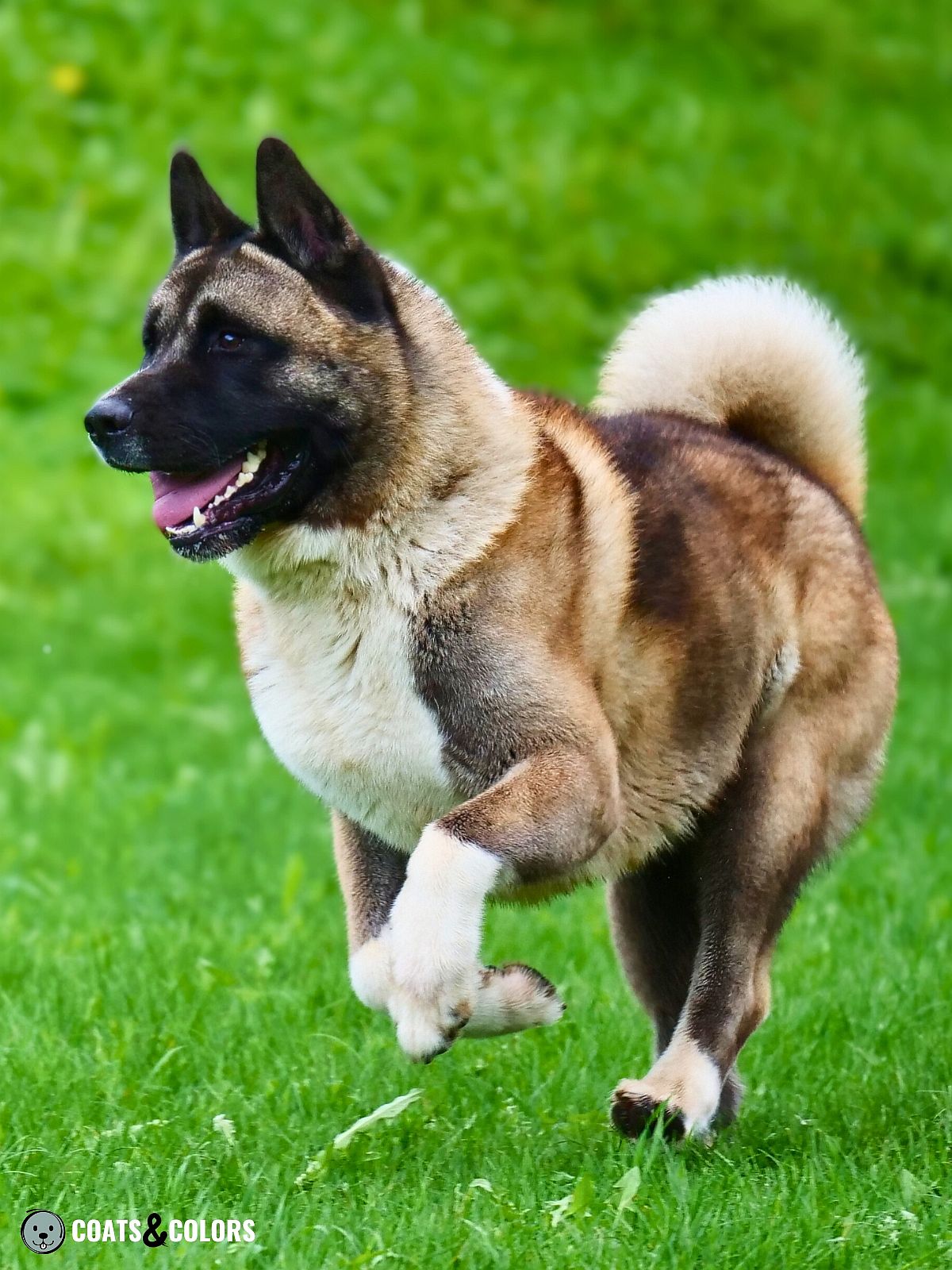
Other Coat Types in American Akitas
Some less common alleles in this breed can produce a non-standard coat type.
The gene variant for long coat naturally only occurs at a very low frequency in purebred American Akita dogs. Dogs with a fluffy long coat are called Wooly Akitas. Every dog groomer’s nightmare, I guess.
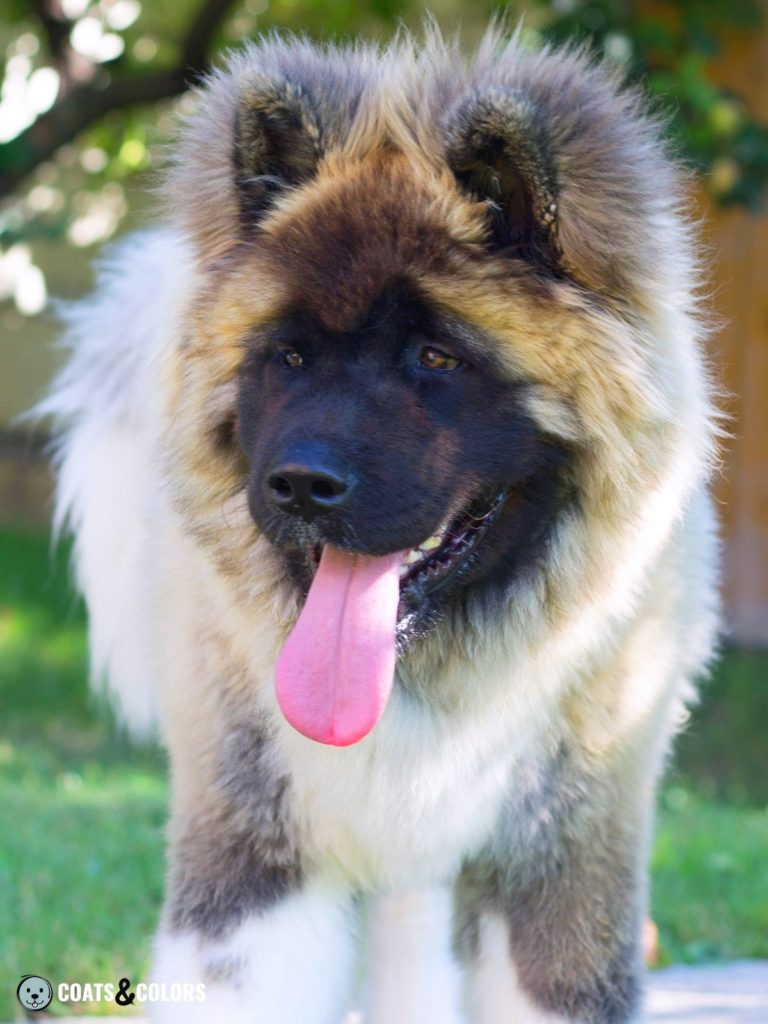
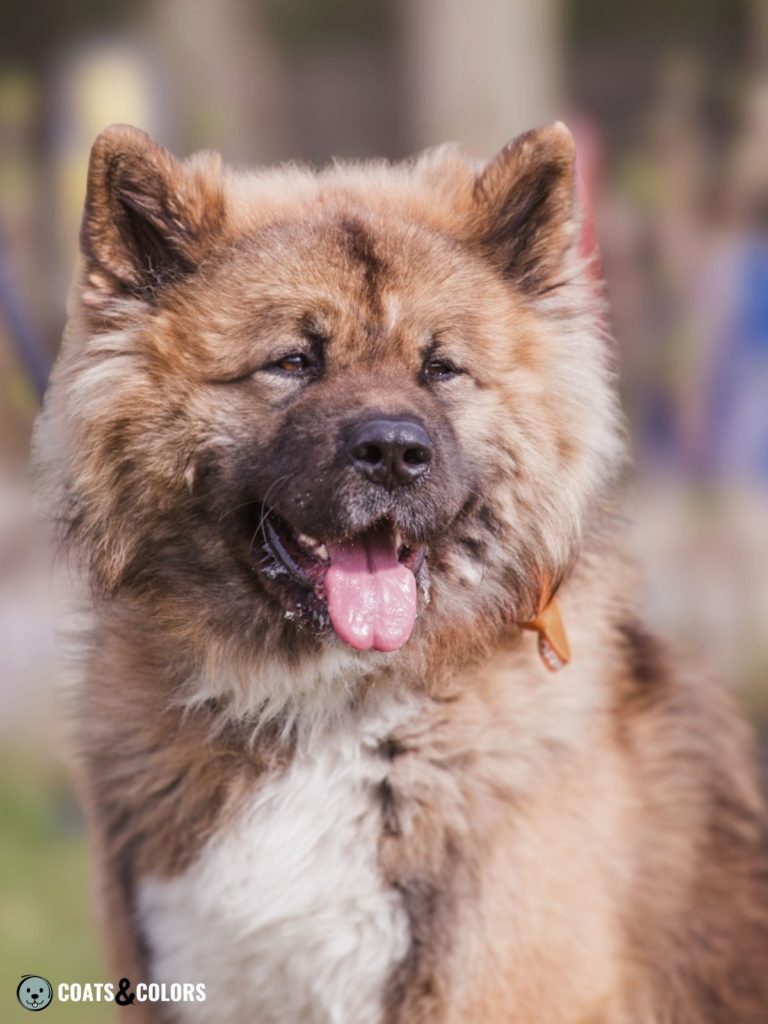

Long-haired Akitas are considered rare. And sure, a white long-haired Akita resembles the world’s biggest Samoyed. So of course “Woolies” are sometimes bred on purpose.
Interestingly, the allele for curly coat is also found in purebred Akitas, although it is also very, very rare[4]. Since curls can only show in long-haired dogs the chances of actually producing a “curly wooly” puppy seem quite small.
Learn More
Links
[1] American Kennel Club (AKC): Official Standard of the American Akita (pdf)
[2] Fédération Cynologique Internationale (FCI): American Akita Breed Standard (pdf)
[3] The Kennel Club (KC): American Akita Breed Standard
[4] Dreger et al. (2019). True Colors: Commercially-acquired morphological genotypes reveal hidden allele variation among dog breeds, informing both trait ancestry and breed potential. PLoS ONE 14(10): e0223995. https://doi.org/10.1371/journal.pone.0223995
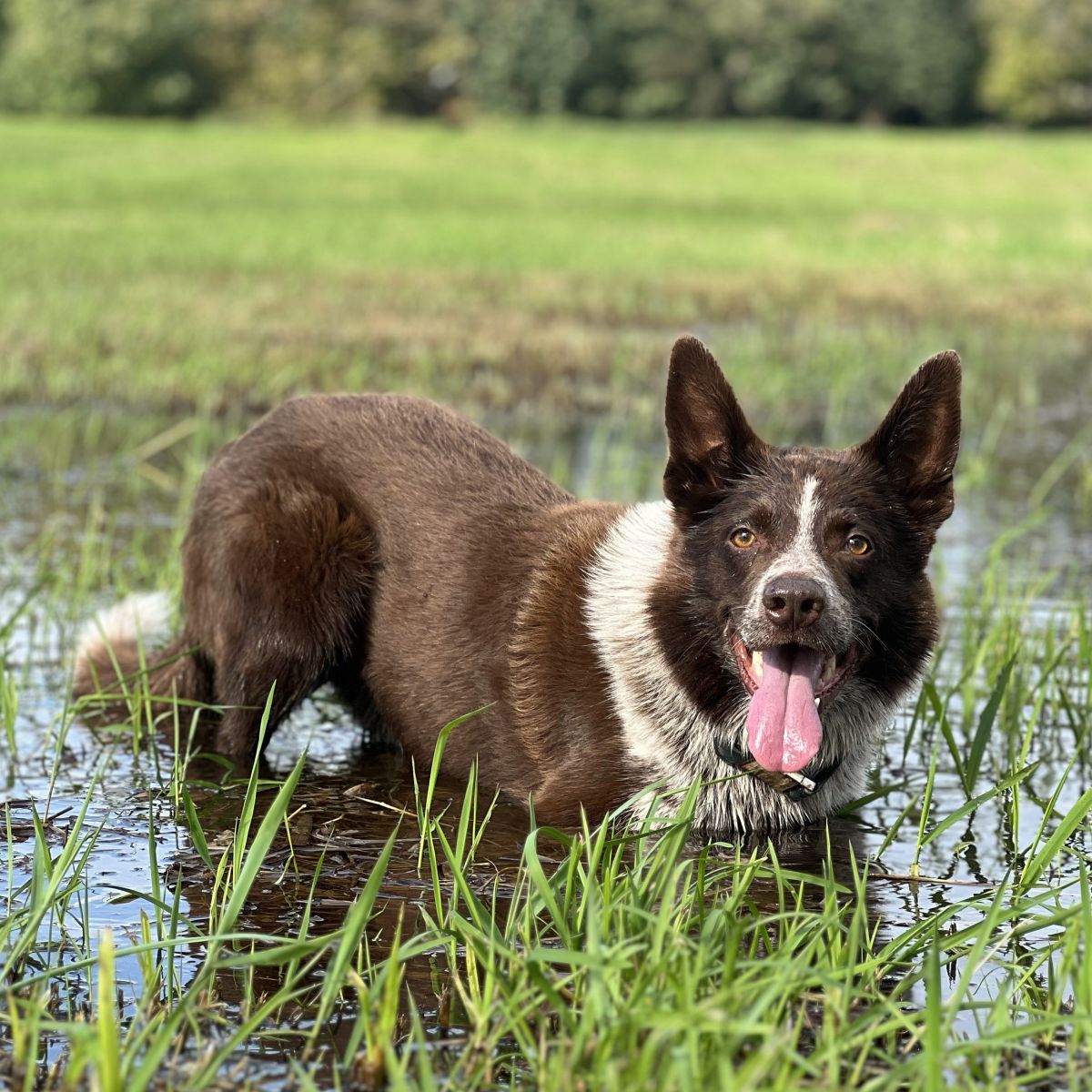
Hi! I’m Steffi. I am a biologist and a big time dog nerd. You are curious about coat color genetics? You’ve come to the right place! Read more.

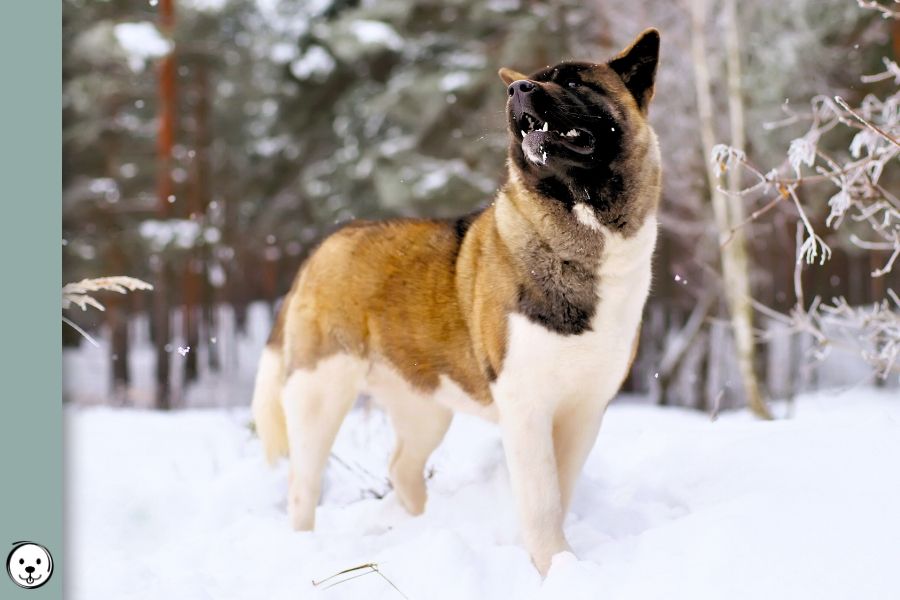

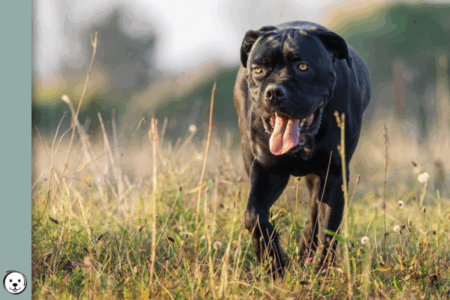
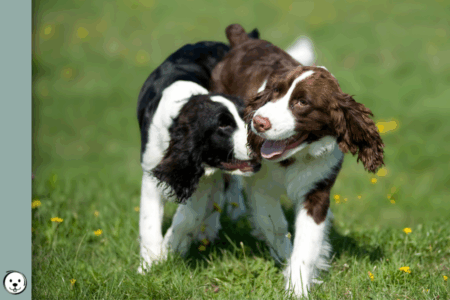
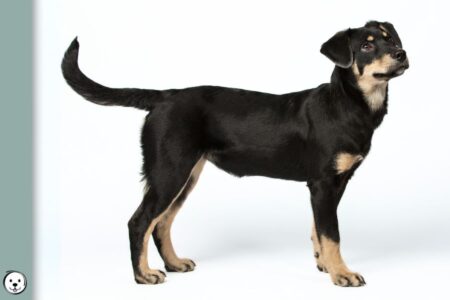
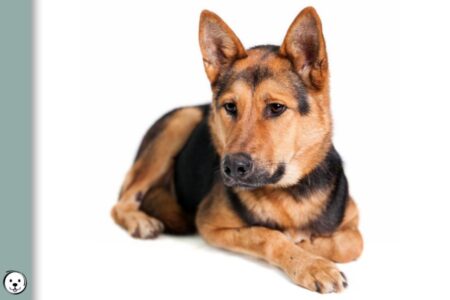

2 thoughts on “American Akita Coat Colors”
Comments are closed.